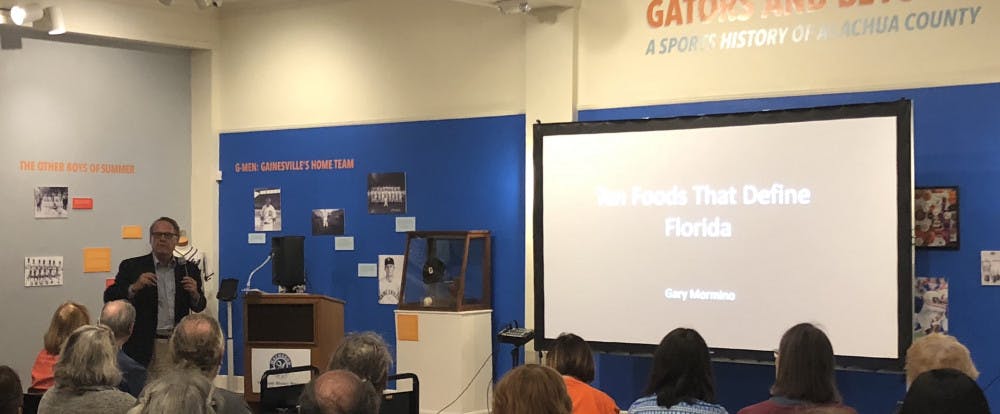Have you ever wondered what makes foods in the Sunshine State iconic or where they originally came from?
Professor Gary Mormino visited the Matheson History Museum on Jan. 12 and explored Florida food history in his lecture, “Ten Foods that Define Florida.”
Gary Mormino is the Frank E. Duckwall Florida professor of history emeritus at USF St. Petersburg. He is a frequent contributor to the “Tampa Bay Times” and has written several books, including "Land of Sunshine, State of Dreams: A Social History of Modern Florida." Dr. Mormino is currently writing a book on Florida foodways.
Here are some of the popular foods that Mormino says define the sunshine state and are sure to make your mouth water:
-
Grouper sandwich
“Grouper was not a gourmet fish until the 1970s,” Mormino said. On the slide screen, he showed a feature article, “Requiem for a Fish Sandwich” by Rich Bragg to demonstrate his point. Bragg writes that grouper has a clean and non-fishy taste, which makes the sandwich very desirable.
-
Caldo gallego
The arrival of the Spanish in the 16th century influenced food cultures across the state of Florida. Caldo gallego is one of the influences. It is a white bean soup mixed in with collard greens, potatoes, pork and garlic. This warm and hearty broth is typically accompanied with bread to soak in.
-
Mullet
According to Mormino, mullet became a popular menu item beginning in 1947. He says that the most famous smoked mullet place in Florida is Ted Peters Famous Smoked Fish in St. Petersburg. A hot smoked mullet served with grits is the definition of good ole Southern eatin’.
-
Black bean soup
The Spanish brought their culture’s rich and warming black bean soup to Florida. It tastes even better when sprinkled atop with a bit of chorizo, a type of pork sausage.
-
Oysters
Referring to a seafood menu popularized in “The Miami Herald” from 1940, Mormino identified the low cost of oysters back then. A quart of oysters was only 60 cents then.. Today, prices are much more expensive. Still, the juicy flesh of oysters is irresistable.
-
Citrus
Without a doubt, the citrus industry is huge in Florida. In fact, Florida provides about 60 percent of the country’s citrus according to the Florida Department of Agriculture and Consumer Services.
-
Barbeque
The Timucua is one of the earliest Native American tribes that migrated to Florida nearly 15,000 years ago. Their main method of cooking involves smoking meat or roasting game above an open fire. Today, barbeque remains an important cooking method and barbeque competitions are held annually in the state.
-
Cuban sandwich
Cuban immigration to Key West, Ybor City and Miami between the late 19th century and 1980s sparked the creation of this delicious ham and cheese sandwich.
-
Key Lime Pie
Key lime, a native fruit to Malaysia, first made its debut in the Florida Keys in the 16th century brought by the Spanish. The famous pie relies on key limes and sweetened condensed milk to give it its refreshing and smooth flavor.
-
Stone Crabs
Stone crabs are one of the most popular foods in the seafood market, and are found along the Biscayne Bay, Florida Gulf Coast and the Keys.
“Food history in Florida is a rainbow experience. You see Native American foods that have been cultivated in the state for thousands of years, including corn, shellfish and seafood. You also see the arrival of new cultures and Spanish influences.” Mormino said. “Nothing is more illustrious than food-- how it is eaten, culture, etiquette and politics. Food is an interesting way of looking at the American character.”
Gary Mormino, a professor from the University of South Florida, visited the Matheson History Museum of Art on Jan. 12 and explored Florida food history in his lecture, “10 Foods that Define Florida."






